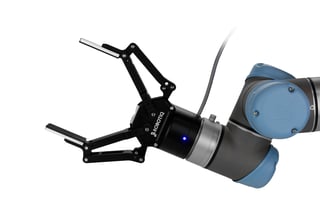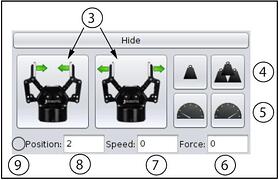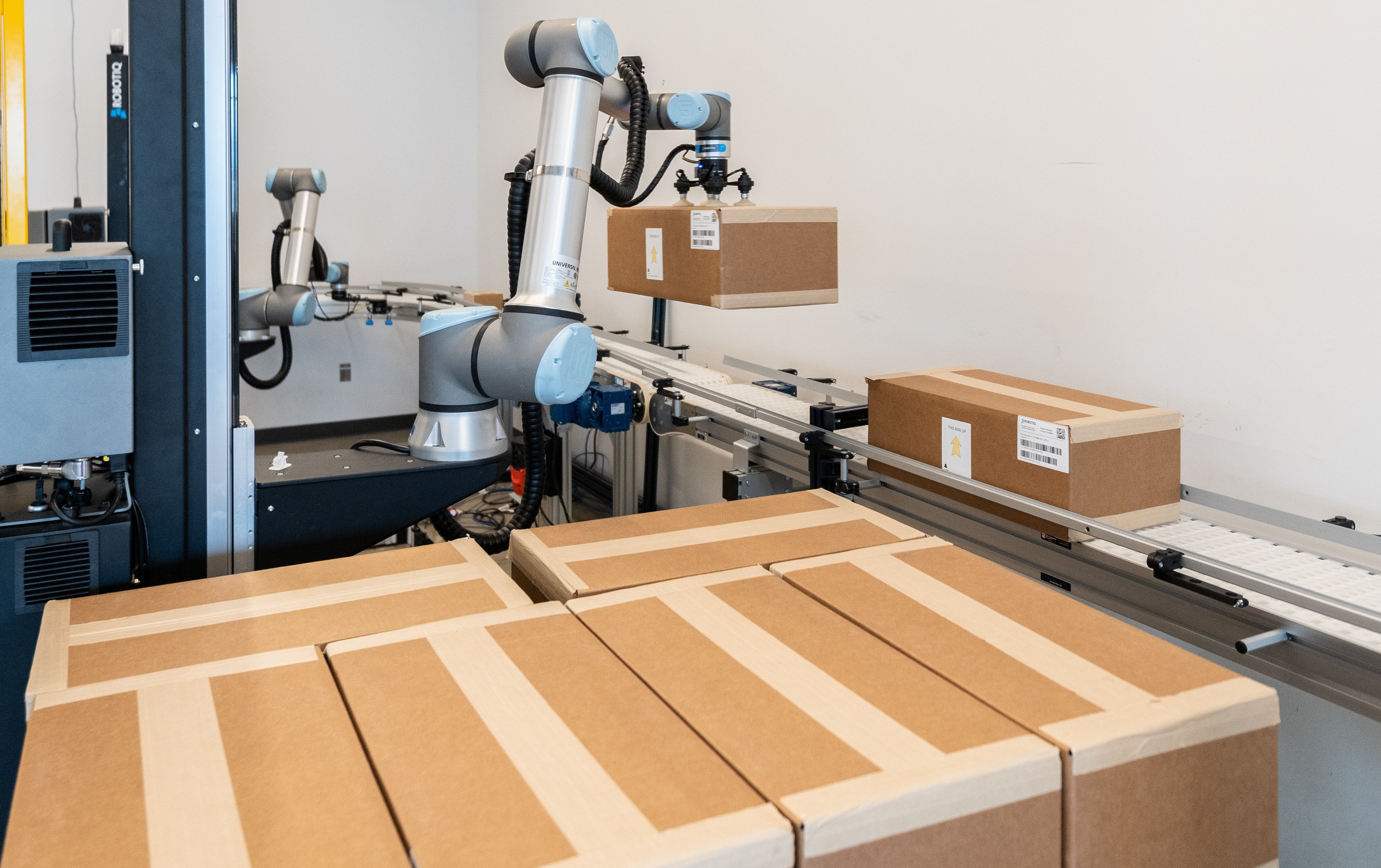5 UR and Robotiq Software Functions That Are Good to Know About

Posted on Mar 10, 2016 7:00 AM. 6 min read time
When setting up your cobot it is a good idea to have some advanced knowledge of the software functions that are available to use with it. Is it a proprietary system that needs to be coded by an expert in the robot manufacturers system or is it a ROS Industrial open source system or perhaps some combination of the two. When looking at UR and Robotiq software compatibility you can be sure they have worked together before and that there is available information to help you if you hit a snag in your program. Following are 5 functions that the UR and Robotiq combination make use of that might help in your application.

- Safety plane functions.
On Universal Robots’ recent CB3 model it is possible to set up a variety of safety functions. One of them is the setting of safety planes, where the robot can have an area where it runs at normal speeds, but when the robot passes through a designated safety plane then it goes into reduced speed mode where the speed is slower. This can be used where the robot has an area where it is preferable to reduce the robot’s motion/speed, for example, when it moves into the same area as an operator is working.
With UR since it is possible to set up these different safety planes, there can be some areas with normal speed and other areas with reduced speed. These areas can also be configured so that they are triggered by external safety components like light sensors or laser scanners. This means that when a human triggers a signal the robot recognizes that the safety plane is operational and will automatically reduce its speed.
Here is an example of a safety plane triggered on Universal-Robots. - Robotiq ready-made widgets for controlling their Grippers on Universal Robots.
 The Robotiq Grippers can be controlled by a predefined command set like MODBUS RTU commands which are typically used on Universal Robots, but also other commands like EtherNet/IP, TCP/IP, DeviceNet, CANopen, EtherCAT can be used for other robot brands.
The Robotiq Grippers can be controlled by a predefined command set like MODBUS RTU commands which are typically used on Universal Robots, but also other commands like EtherNet/IP, TCP/IP, DeviceNet, CANopen, EtherCAT can be used for other robot brands.
In order to help and ease the programming load, Robotiq has developed a widget that can be installed on Universal Robots which includes some pre-defined template programs where the control of the gripper is much easier to include into the robot program. This includes the opening-closing range, as well as the speed control and the force control for the gripper.
Here is an example using a Robotiq widget on Universal Robots.
- Euromap 67 interface.
A collaborative robot can be used for many different applications ranging from pick & place – packaging – process handling and probably the most popular is machine tending, for example with CNC and injection molding machines there is often the monotonous task of loading and unloading the machine. In order to use a robot for tending these machines it is necessary to create an interface; so the robot only goes into the machine when the machine is idle and also so the machine does not start when the robot is inside the machine to pick or place an item.
On many brands of injection molding machines it is possible to match with a Euromap 67 interface which is an internationally recognized interface standard. Universal Robots has developed a robot Euromap 67 interface with a cable so it is possible to plug in and interconnect the robot and, for example, injection molding machine very fast.
There are several benefits to being able to do this:
– it is fast to establish signal exchange
– interconnection of emergency stop systems, so if one of the machines performs an emergency stop, then other machine also stops
– it is fast to create a program that interfaces with the injection molding machine.
An example using Euromap 67 interface with an injection molding machine. - Force mode.
Universal Robots has a build-in force mode, where it is possible to achieve force measurements in the range of:
– force precision ± 10 N
– torque precision ± 5 Nm
– position precision ± 5 mm
– orientation precision ± 0.5 °.
This can be used in applications where a certain force is necessary when applied to the robot’s end effector, for example, in a polishing task where it is important to keep a set force pressure on the polishing tool towards the object being polished.
However in applications where a much higher precision of the force is necessary; then an external Robotiq Force Torque Sensor, for example the FT 300, can be mounted on the robot between the robot and end effector. This will provide measurements for the range:
– Fx, Fy, Fz: ± 300 N,
– Mx, My, Mz: ± 30 N*m,
With Signal noise:
– Fx, Fy: 0.80N,
– Fz: 0.5N,
– Mx, My: 0.01 N*m,
– Mz: 0.03 N*m.
Here is an example using force mode. - Script and socket programming.
As mentioned earlier the Polyscope GUI (graphical user interface) is fast, so you can get started with robot programming right away and within minutes it is possible to construct a robot program.
However if the robot task and robot cell requires the handling of a particularly complicated task which may include many external components, for example a vision system, or if the robot needs to exchange data with an external host system; then it is also possible to create a program for this. In these cases, Universal Robots has developed a script language which can be used together with the Polyscope program or it can be used entirely by itself as independent script programming, which is more like traditional programming by writing code line by line. This might be important for advanced users or complex applications, but even for this a lot of examples and help can be found online.
Example of script programming.
Having available information, example programs, and a community of robot users, who are interested and willing to share their knowledge, is a huge plus for the integration and utilization of any robot cell. So come join the UR Robotiq community, leave a comment below and show us your program or your problems. We would love to see what you have done and if there are snags, maybe we can help.

 Lars Skovsgaard is Managing Director of Zacobria Pte. Ltd. an accredited Universal Robots support Centre and Forum, as well as an authorized Robotiq and MIR distributor.
Lars Skovsgaard is Managing Director of Zacobria Pte. Ltd. an accredited Universal Robots support Centre and Forum, as well as an authorized Robotiq and MIR distributor.
Disclaimer: While the Zacobria Pte. Ltd. believes that information and guidance provided is correct, parties must rely upon their skill and judgement when making use of them. Zacobria Pte. Ltd. assumes no liability for loss or damage caused by error or omission, whether such an error or omission is the result of negligence or any other cause. Where reference is made to legislation it is not to be considered as legal advice. Any and all such liability is disclaimed.
If you need specific advice (for example, medical, legal, financial or risk management), please seek a professional who is licensed or knowledgeable in that area.







Leave a comment